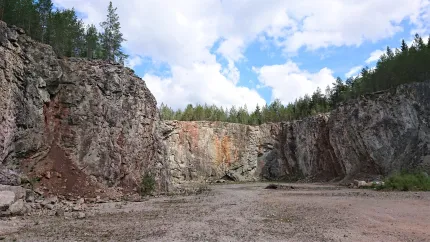
Östbjörka
Boda Kyrkby, ÖstbjörkaThe limestone mountain at the Östbjörka nature reserve is made up of limestone formed by coral animals in the sea that covered the Siljan countryside just over 400 million years ago. Here are leafy spruce forests that are rich in flowering herbs, lime pine forests at the heights and in the hillside remnants of lime kilns used to make cement from the lime.
Show more Show lessContact
About
Good to know
Links
Find here
Visiting address:
Östbjörka,
795 91
Boda Kyrkby
Drive north from Rättvik on Backavägen. When the road divides, turn right towards Östbjörka. Turn right onto road Mårtens Gatu and continue until you can turn right to road Masbodvägen. Continue along the road to the nature reserve.
